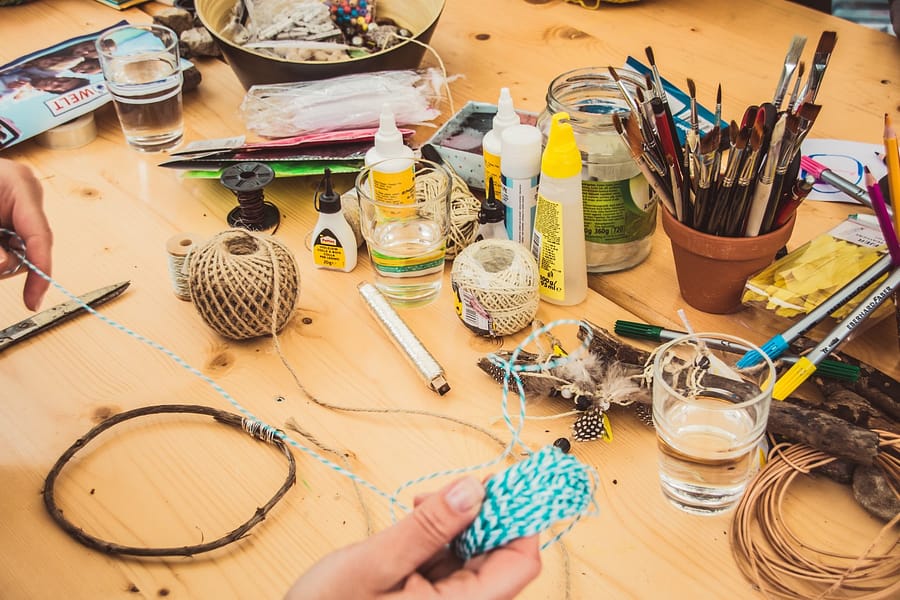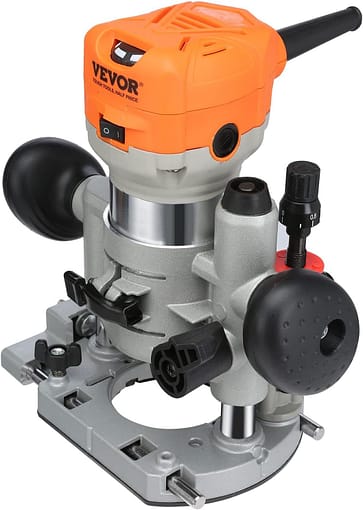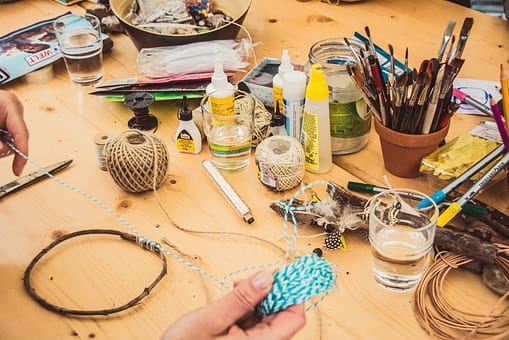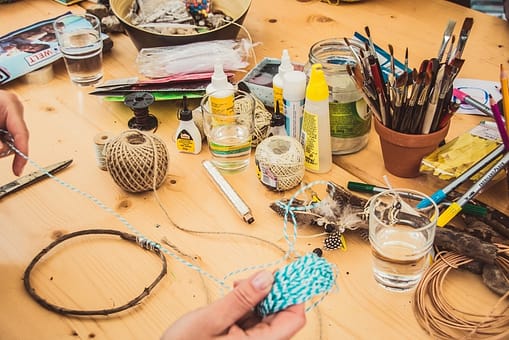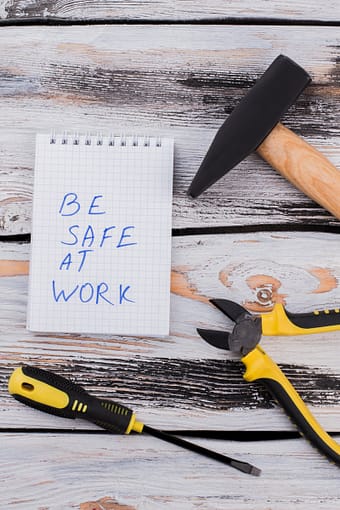Are you someone who loves the idea of tackling fun DIY projects but always finds yourself struggling to find the time for them? If so, then we have just the solution for you! Introducing the amazing “How Do I Find The Time To Do DIY Projects?” This innovative product is designed to help you effortlessly carve out time in your busy schedule for all those exciting DIY projects you’ve been dreaming of. Say goodbye to constantly pushing your projects aside and hello to a world where your creative endeavors take center stage. With “How Do I Find The Time To Do DIY Projects?”, your DIY dreams are just a step away!

Prioritizing DIY Projects
Identifying the importance of DIY projects
When it comes to finding time for DIY projects, the first step is to recognize the importance of these projects in your life. DIY projects allow you to express your creativity, save money, and create a space that is tailored to your preferences and needs. By acknowledging the value of these projects, you can prioritize them and make them a priority in your schedule.
Setting goals and deadlines for each project
To effectively manage your time and ensure that your DIY projects get completed, it’s important to set clear goals and deadlines for each project. Start by listing all the projects you want to tackle, and then prioritize them based on their importance and urgency. For each project, set a realistic deadline that allows for a reasonable amount of time to complete the task. By setting goals and deadlines, you create a sense of accountability and motivation to get things done.
Creating a project priority list
Once you have identified the importance and set goals for your DIY projects, it’s time to create a project priority list. This list will help you stay organized and ensure that you are working on the most important projects first. Consider factors such as the impact of the project on your daily life, the resources required, and the time commitment involved. By prioritizing your projects, you can focus your time and energy on the tasks that matter most to you.
Time Management Strategies
Analyzing your daily schedule
To find time for DIY projects, it’s essential to analyze your daily schedule and identify any pockets of time that can be dedicated to these tasks. Take a close look at your daily routine and identify activities that can be adjusted or eliminated to create more free time. Whether it’s waking up an hour earlier, cutting back on screen time, or reorganizing your evening routine, analyzing your daily schedule allows you to find the time you need.
Identifying time-wasting activities
Another important time management strategy is to identify time-wasting activities. We all have habits and behaviors that consume our time without providing any real value. It could be excessive scrolling through social media, watching too much television, or getting caught up in unnecessary chores. By recognizing these time-wasting activities, you can make a conscious effort to reduce or eliminate them, freeing up more time for your DIY projects.
Implementing time-blocking techniques
One effective time management technique is time-blocking. Time-blocking involves scheduling specific periods of time for certain tasks or activities. By assigning dedicated time blocks for DIY projects, you create a structured schedule that promotes productivity and ensures that you have allocated time for your projects. Set aside blocks of time each day or week to work on your DIY projects, and stick to your schedule as much as possible.
Utilizing productivity tools and apps
There is a wide range of productivity tools and apps available that can help you manage your time more effectively. From calendar apps to task management platforms, these tools can assist you in staying organized, setting reminders, and tracking your progress. Find tools that align with your preferences and utilize them to streamline your DIY project planning and execution. With the help of these tools, you can optimize your time management and increase your productivity.
Utilizing Weekends and Holidays
Designating specific time slots for DIY projects
Weekends and holidays often provide more free time compared to weekdays, making them ideal for tackling DIY projects. To make the most of these time periods, designate specific time slots for your DIY projects. Whether it’s a few hours on Saturday morning or a full day on a long weekend, setting aside dedicated time allows you to focus solely on your projects without distractions. By scheduling these time slots in advance, you ensure that you have allocated time for your DIY tasks.
Planning projects during long weekends or holidays
Long weekends and holidays present excellent opportunities to embark on larger DIY projects that may require more time and effort. Take advantage of these extended breaks from work to plan and execute projects that require a longer time commitment. Whether it’s painting a room, building furniture, or revamping your garden, long weekends and holidays provide the perfect opportunity to tackle these ambitious projects. Plan ahead, gather your materials and tools, and dive into these projects during those longer breaks.
Taking advantage of days off work
In addition to long weekends and holidays, another way to find time for DIY projects is by taking advantage of your regular days off work. If you have the flexibility to take a personal day or request time off, consider using those days to focus solely on your DIY tasks. By taking a day off work, you eliminate the usual demands and responsibilities, allowing you to dedicate your time and energy to your projects. Whether it’s a midweek break or a planned leave, these days off can be invaluable for making progress on your DIY ventures.
Starting Small and Building Momentum
Choosing simple and manageable projects
One effective strategy for finding time for DIY projects is to start small. Instead of jumping into complex and time-consuming projects right away, begin with simple and manageable tasks. By choosing smaller projects, you can complete them more quickly, giving you a sense of accomplishment and motivation to continue. These smaller victories build momentum and confidence, making it easier to find time and energy for larger projects in the future.
Breaking down complex projects into smaller tasks
For more ambitious DIY projects, breaking them down into smaller tasks is a helpful approach. Complex projects can often feel overwhelming, making it harder to find the motivation and time to tackle them. However, by breaking them down into smaller, more manageable tasks, you can approach them one step at a time. This approach allows you to work on the project incrementally, finding time for each smaller task without feeling overwhelmed by the entire project.
Learning new skills gradually
Embarking on DIY projects often involves learning new skills along the way. However, trying to master too many skills at once can be time-consuming and overwhelming. Instead, take a gradual approach to learning new skills. Start with projects that utilize your existing skills and gradually introduce new techniques and tools. This way, you can find time for self-improvement while still making progress on your DIY projects. As you become more proficient in your new skills, you can take on more challenging and time-intensive projects.
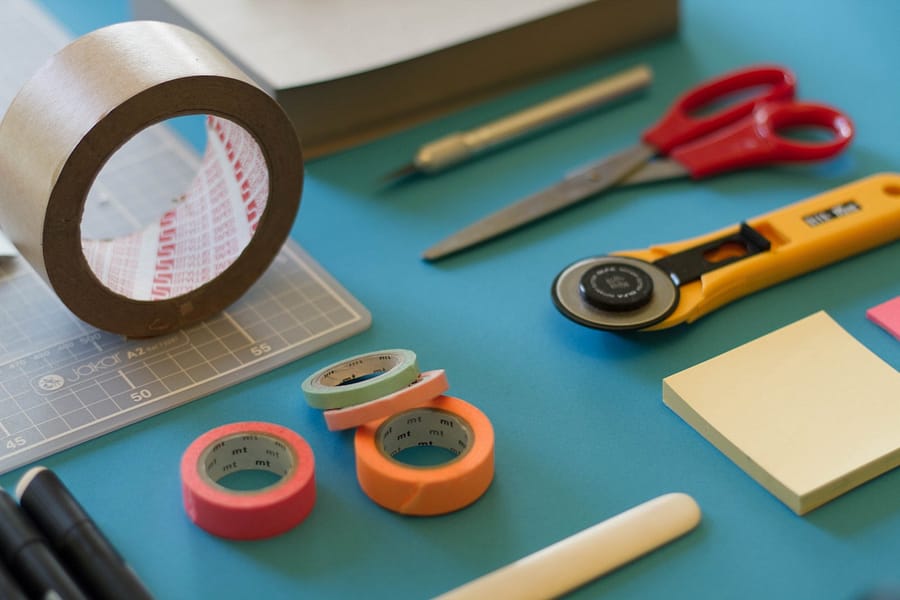
Incorporating DIY Time into Daily Routine
Finding pockets of free time
Within your daily routine, there are likely pockets of free time that can be utilized for DIY projects. These pockets may be small increments of time, such as during your lunch break, while waiting for appointments, or during commutes. By identifying these moments of free time, you can use them to your advantage by completing small, quick DIY tasks. Whether it’s organizing a drawer, repurposing a small piece of furniture, or brainstorming ideas for your next project, these small pockets of time can add up and contribute to your overall progress.
Scheduling short DIY sessions
In addition to finding pockets of time, consider scheduling short DIY sessions within your daily routine. Dedicate 15 to 30 minutes each day to work on your DIY projects. While it may not seem like much time, consistent daily effort can lead to significant progress over time. Whether it’s sanding a piece of wood, painting a small section, or researching ideas, these short sessions ensure that you are actively working on your projects and moving forward.
Multitasking during mundane activities
Another way to find time for DIY projects is to multitask during mundane activities. We all have tasks or activities that are repetitive and do not require our full attention. For example, while folding laundry, listening to a podcast or audiobook can provide the opportunity to research DIY techniques or gather inspiration. Similarly, while commuting or doing household chores, you can use hands-free devices to listen to DIY tutorials or educational podcasts. By incorporating DIY-related activities into these otherwise mundane tasks, you effectively make use of your time and make progress on your projects.
Getting Others Involved
Delegating tasks to family members or friends
Finding time for DIY projects can be made easier by delegating tasks to family members or friends. Assign specific tasks or responsibilities to others who are willing to help. Whether it’s painting a room, assembling furniture, or organizing materials, involve your loved ones in the process. By sharing the workload, you can accomplish more in less time, allowing you to focus on other aspects of your DIY projects.
Organizing DIY sessions with loved ones
In addition to delegating tasks, consider organizing DIY sessions with your family members or friends. Dedicate a day or a weekend specifically for DIY activities and invite others to join you. Not only does this make the process more enjoyable and social, but it also allows everyone to contribute their skills and expertise. By collaborating and working together, you can accomplish more in a shorter period of time, making it easier to find time for DIY projects.
Joining DIY groups or workshops
If you don’t have family members or friends available to help with your projects, another option is to join DIY groups or workshops. These communities provide a space for like-minded individuals who share a passion for DIY projects. By joining such groups, you can gain access to a network of people who can offer advice, assistance, and resources. Attending workshops or group sessions can also help you learn new skills and gather inspiration for your own projects. By tapping into these communities, you not only find support but also create opportunities to learn, grow, and find time for your DIY endeavors.
Eliminating or Outsourcing Non-Essential Tasks
Assessing time-consuming obligations
To create more time for DIY projects, it’s crucial to assess your current obligations and determine which ones are time-consuming or unnecessary. Take a step back and evaluate your commitments and responsibilities. Identify tasks or obligations that take up a significant amount of time without providing much value or fulfillment. By recognizing these time-consuming obligations, you can make informed decisions about whether to eliminate, delegate, or outsource them.
Identifying tasks that can be eliminated
After assessing your obligations, identify tasks that can be eliminated altogether. These tasks may be low-priority responsibilities that can be removed from your to-do list without any significant impact on your life. Whether it’s a recurring meeting that can be canceled, a chore that can be automated or delegated, or an activity that no longer aligns with your values, eliminating non-essential tasks frees up time for you to focus on your DIY projects.
Outsourcing certain tasks to free up time
For tasks that cannot be eliminated but still take up a significant amount of time, consider outsourcing them to free up your own time. While there may be a cost involved, the time saved can be invaluable in pursuing your DIY projects. Whether it’s hiring a cleaner or a virtual assistant to handle household chores or administrative tasks, outsourcing allows you to delegate responsibilities, giving you more time to invest in your DIY endeavors.
Creating an Organized Workspace
Setting up a dedicated DIY area
Having a dedicated DIY area can greatly enhance your productivity and efficiency. Whether it’s a corner of your garage, a spare room, or a table in your living space, designate a specific area for your DIY projects. This dedicated space provides a sense of focus and helps keep your projects organized. Having all your tools, materials, and equipment in one place eliminates the time wasted searching for items and allows you to start working on your projects more quickly.
Arranging tools and materials for easy access
Within your DIY workspace, it’s important to arrange your tools and materials in a way that promotes easy access. Invest in storage solutions such as shelves, racks, or labeled containers to keep everything organized and easily identifiable. This not only saves time but also reduces frustration and allows you to maintain a clear and clutter-free workspace. By arranging your tools and materials for easy access, you eliminate the time wasted searching for what you need and can focus on your DIY projects.
Keeping the workspace clean and clutter-free
A clean and clutter-free workspace is essential for maintaining efficiency and productivity. Take the time to declutter your DIY area on a regular basis. Remove any unnecessary items, properly store tools and materials, and clean the space after each project. Not only does a clean workspace create a positive and inspiring environment, but it also saves time by preventing distractions and allowing you to find what you need quickly. By cultivating a habit of cleanliness and tidiness, you optimize your DIY workspace for maximum productivity.
Finding DIY Inspiration and Resources
Exploring online platforms and blogs
When it comes to finding DIY inspiration and resources, online platforms and blogs are a treasure trove of ideas and information. Explore popular DIY websites, YouTube channels, and social media platforms to discover new projects, techniques, and tips. These platforms often feature step-by-step tutorials, before and after photos, and user-generated content that can spark your creativity and motivate you to take on new projects. By immersing yourself in online DIY communities, you can constantly find inspiration and ideas to fuel your passion for DIY projects.
Subscribing to DIY magazines or newsletters
Another great way to access DIY inspiration and resources is by subscribing to DIY magazines or newsletters. These publications are dedicated to showcasing the latest trends, techniques, and projects in the DIY world. By subscribing to these magazines or newsletters, you receive regular updates and tips delivered directly to your inbox or mailbox. This allows you to stay up to date with the DIY community and have a constant source of inspiration and knowledge at your fingertips.
Attending DIY exhibitions or events
For a more immersive and hands-on experience, consider attending DIY exhibitions or events. These gatherings bring together DIY enthusiasts, experts, and vendors, creating a vibrant atmosphere of creativity and learning. At these events, you can attend workshops, participate in demonstrations, and interact with like-minded individuals. The energy and enthusiasm at DIY exhibitions and events can reignite your passion for DIY projects and provide you with valuable insights and connections within the community.
Overcoming Procrastination and Distractions
Identifying personal procrastination triggers
Procrastination can be one of the biggest obstacles to finding time for DIY projects. To overcome this habit, it’s important to identify your personal procrastination triggers. Reflect on the activities or situations that tend to make you procrastinate. It could be fear of failure, perfectionism, or simply being overwhelmed by the magnitude of the project. By recognizing these triggers, you can develop strategies to counteract them and stay focused on your DIY goals.
Implementing strategies to stay focused
Once you have identified your procrastination triggers, implement strategies to stay focused and motivated. This could involve setting mini-goals, breaking tasks into smaller steps, or utilizing visual reminders. Experiment with different techniques such as time limits, reward systems, or accountability partners to find what works best for you. By actively implementing strategies to maintain focus, you can overcome procrastination and make consistent progress on your DIY projects.
Minimizing distractions and interruptions
Distractions and interruptions can significantly impact your ability to find time for DIY projects. Identify the common distractions in your environment and take steps to minimize them. This could involve turning off notifications on your phone, creating a designated quiet workspace, or communicating boundaries to those around you. By minimizing distractions and interruptions, you create a focused and uninterrupted environment that allows you to dedicate your time and energy to your DIY projects.
In conclusion, finding the time for DIY projects requires intention, effort, and effective time management. By identifying the importance of DIY projects, setting goals, and prioritizing tasks, you can make DIY projects a meaningful part of your life. Implementing time management strategies, utilizing weekends and holidays, and incorporating DIY time into your daily routine ensure that you are consistently making progress. Getting others involved, eliminating non-essential tasks, and creating an organized workspace optimize your time and resources. By finding DIY inspiration and resources and overcoming procrastination and distractions, you can successfully carve out time for your DIY projects and enjoy the satisfaction of creating something with your own hands.

